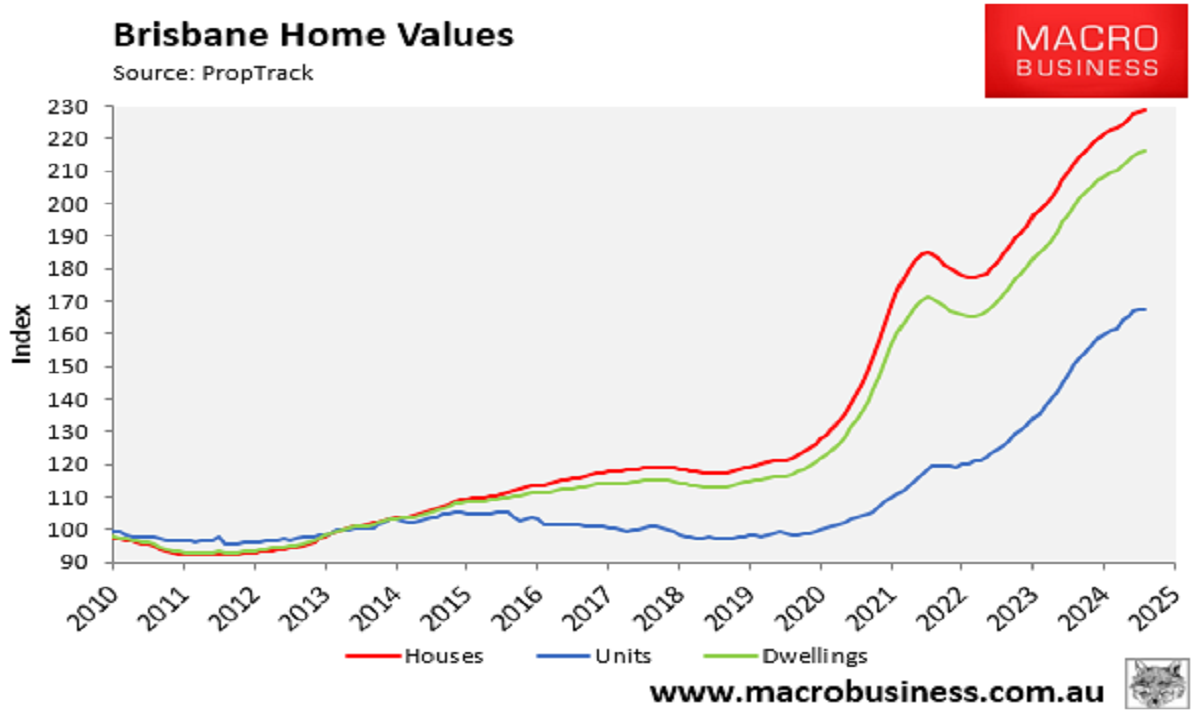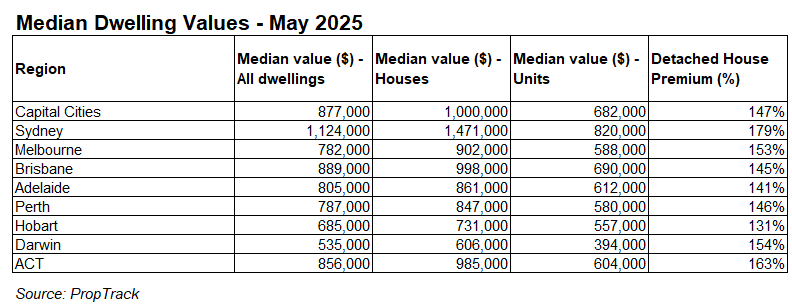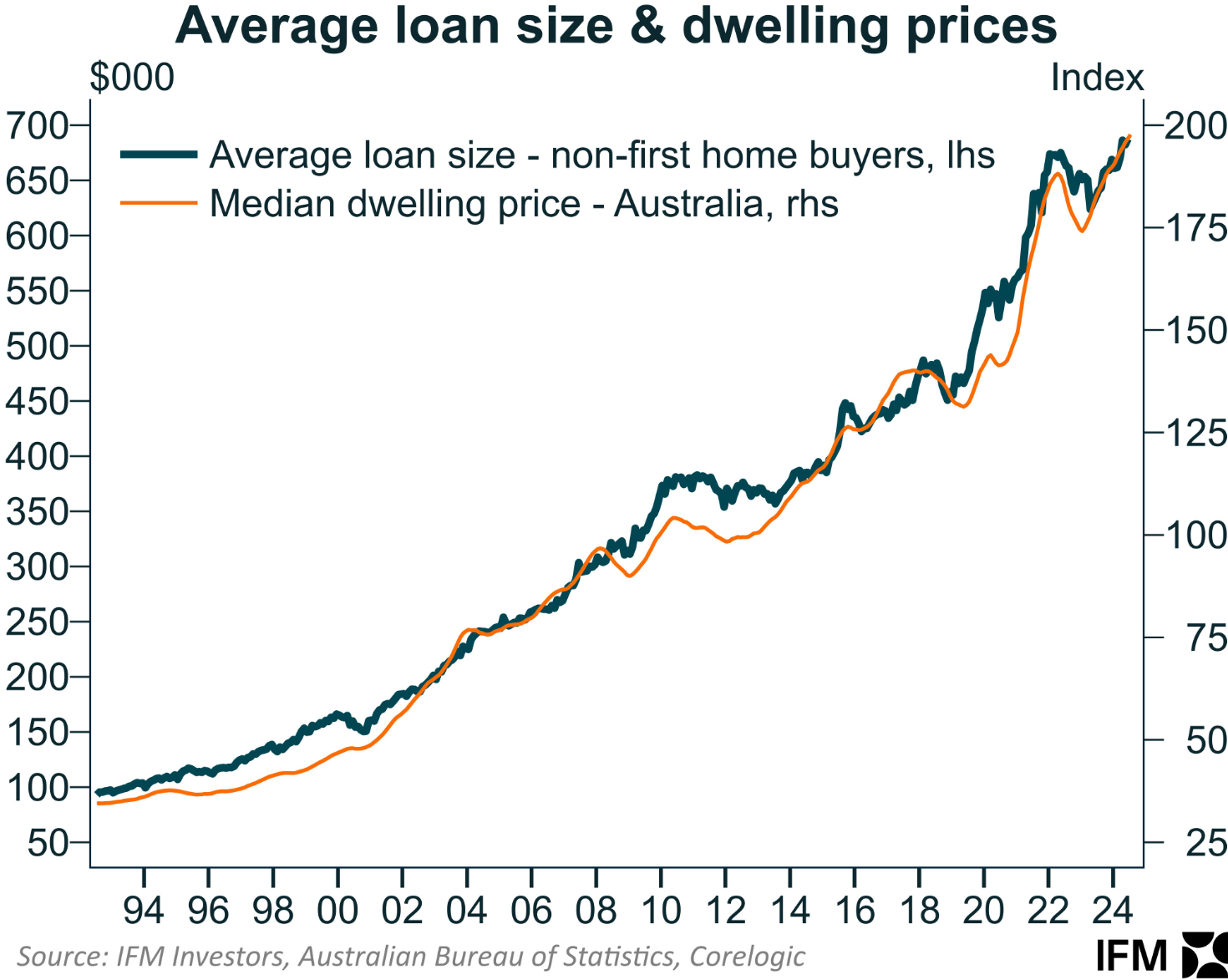Brisbane’s median home price has surged by 85% since the start of the COVID-19 pandemic in March 2020.

According to PropTrack, Brisbane’s median dwelling value was $889,000 in May 2025, the second-highest in the nation, behind Sydney.

Brisbane dwelling values were already set to rise further owing to the Reserve Bank of Australia’s (RBA) monetary easing cycle, which has already delivered two 0.25% reductions in the official cash rate.
The futures market tips that the RBA will deliver another three 0.25% rate cuts by the end of the year, lowering the official cash rate to 3.10%.

Lower mortgage rates will stimulate buyer demand, putting upward pressure on prices.
The federal government’s 5% deposit scheme for first home buyers will then come into effect from 1 January 2026, with no caps on places or income. This policy is expected to stimulate further buyer demand and price appreciation.
Not to be outdone, the Queensland state government has announced the most generous shared equity scheme in the nation, promising help to purchase homes valued at up to $1 million.
Singles earning up to $150,000 and households with two adults earning up to $225,000 will be eligible for the $165 million Boost to Buy program, which Treasurer David Janetzki announced in Tuesday’s budget.
The government will invest up to 30% equity in new builds and 25% in existing homes, up to a total of $1 million.
A qualified applicant with a minimum deposit of $15,000 on a $750,000 new property can receive an equity contribution from the state government of up to $225,000.
Applications are expected to open later this year.
“Queenslanders shouldn’t be locked out of buying because they don’t have the bank of mum and dad, so we’re making big changes to deliver a nation-leading Boost to Buy scheme to reduce the deposit gap”, Premier David Crisafulli said.
“I promised we’d bring ownership within reach for more Queenslanders, and Boost to Buy, homebuyer grants and abolishing stamp duty are all about delivering home ownership for more Queenslanders”.
Like other demand-side policies, the Queensland government’s Boost to Buy program is self-defeating from a housing affordability perspective.
Ultimately, it will drive values higher, reducing the structural affordability of housing.
We have seen how this story ends countless times this century, with first-home buyer grants, shared equity schemes, and other subsidies capitalised into higher home values and larger mortgages.

Introducing more demand-side “affordability” measures and expecting a different result is the definition of housing policy insanity.
Welcome to 21st Century Australia, where pumping home prices and mortgage debt is a national sport.
I discussed these issues with Steve Austin at ABC Radio Brisbane:

